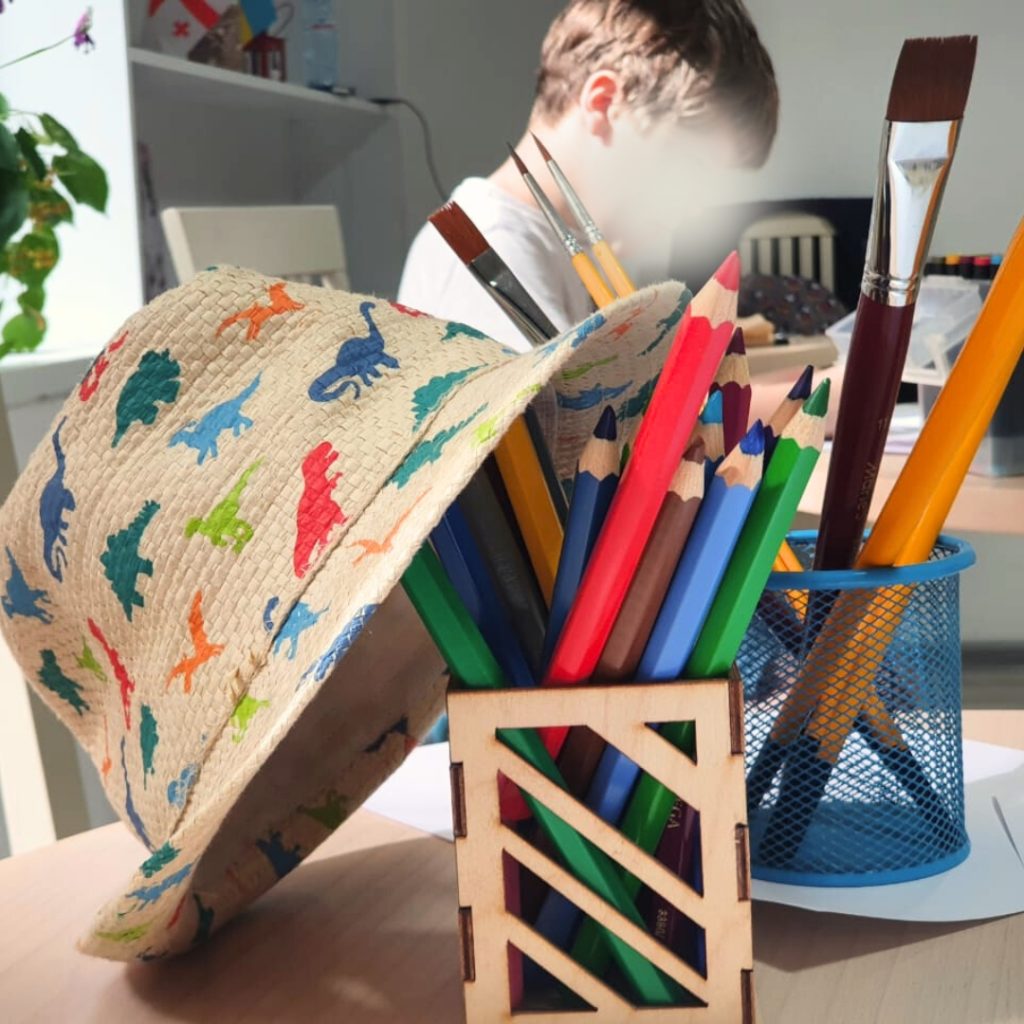The Power of Art Therapy for Children and Teenagers with PTSD

In recent years, art therapy has attracted growing interest within both academic circles and the international community. The field of international development and humanitarian aid have also shown increasing concern in this practice, with more projects now focusing on mental health and psychological well-being.
Art therapy is a form of therapeutic practice that utilises the creative process of making art to promote mental well-being. It combines traditional psychology and therapeutic techniques with artistic expression to help individuals explore their thoughts, feelings, and experiences in a non-verbal and non-threatening manner. It is particularly valuable for people of all ages, backgrounds, and abilities.

Art therapy has emerged as an important tool to help people heal from trauma and other psychological conditions such as Post-Traumatic Stress Disorder (PTSD). It is because of these unique qualities that it represents a great tool for helping young people and children cope with PTSD. This is particularly relevant as more children and adolescents are experiencing psychological harm from situations of conflict or migration, due to the destabilisation or collapse of social structures.
Art therapy helps children and young people deal with PTSD by providing a safe space where they can express themselves freely, facilitating emotional expression and increasing emotional resilience.
As part of our project “Ukrainian resilience through sport, games and music”, we are using art therapy to help Ukrainian refugee children and teenagers in Georgia to cope with their trauma and PTSD.
But why did we choose art therapy? In this article, we explore the benefits of this practice for young people and children who have experienced distressing situations such as migration and armed conflict.
First and foremost, providing children and young people with a safe space where they can express themselves without fear of being judged or suffering negative consequences is essential in their recovery process. Through art therapy, children and teenagers can learn to rebuild trusting social relationships. Giving children access to a safe space where they can reveal their emotions is the first step towards empowering them and developing their communication skills.

Secondly, art therapy allow children and teenagers to grow emotional resilience, a key element in the recovery process for people affected by PTSD. Art therapy helps them to develop coping mechanisms and other tools to better understand their emotions. By expressing their traumatic experiences and emotions, they gain a better understanding of themselves and can advancethe tools they need to healthily process their experiences before facing future challenges.
Thirdly, art therapy can also facilitate emotional expression. Children and teenagers may find it difficult to reveal their emotions or talk about past traumatic situations. Artistic and creative activities offer them other ways of expressing themselves about the most difficult events in their lives. Through artistic expression, they can confront and revisit memories and traumas, developing tools to better understand their own emotions.

Art therapy is utilised in a variety of settings, including mental health clinics, hospitals, schools, rehabilitation centers, and community programs. It complements traditional therapy approaches and can be particularly effective for individuals who may struggle with verbal expression due to trauma, as it provides alternative methods of communication and self-exploration.
Overall, art therapy is an important tool for helping our children and adolescents deal with past traumatic experiences, understand their emotions and face future challenges. This method encourages self-discovery, builds self-confidence and helps to empower young people. However, art therapy alone is often insufficient to help children and teenagers cope with post-traumatic stress disorder. This is why it is often integrated into a more comprehensive treatment of PTSD. Nevertheless, art therapy remains a valuable tool for improving the psychological well-being of children and young people who have experienced trauma, and for helping them to become active agents in their own future.

